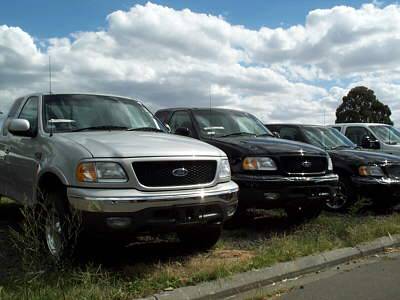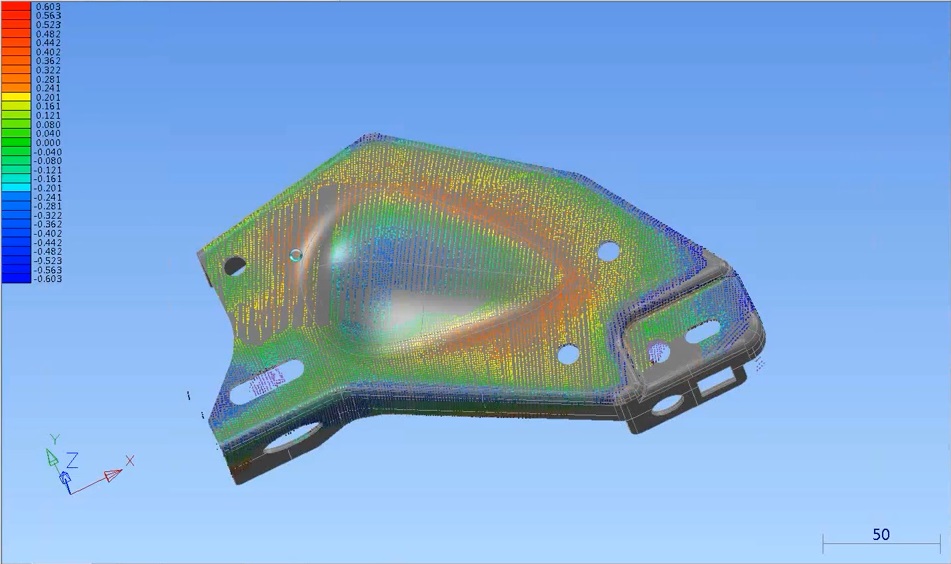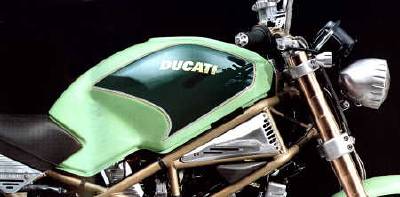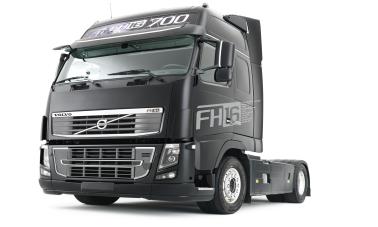 Vehicle Development Corporation Pty Ltd. (VDC) is the largest right-hand drive conversion specialist for Ford F Series vehicles in Australia. It undertakes a complex vehicle conversion program that requires an extensive redesign and manufacturing component to put modified North American vehicles on Australian roads.
Vehicle Development Corporation Pty Ltd. (VDC) is the largest right-hand drive conversion specialist for Ford F Series vehicles in Australia. It undertakes a complex vehicle conversion program that requires an extensive redesign and manufacturing component to put modified North American vehicles on Australian roads.
Ford F Series vehicles are large, heavy-duty vehicles fitted with powerful engines and robust drive trains. They have a very strong following in Australia with the rural community and amongst tradesmen who appreciate the size and power of the F Series in a day-to-day work vehicle. They have also enjoyed sustained popularity with Australian ambulance services, who fit custom bodies for paramedic use. F Series vehicles also have a loyal following of enthusiasts in Australia and are developing a popular following within the recreational vehicle community, which continues to generate demand for new vehicles.
Vehicles are imported by Ford Australia from the F Series production plant in Canada and are supplied to VDC in a fully finished, left-hand drive configuration. Conversion to right-hand drive typically adds around US$5.8k (A$17k) to the sticker price. Customer demand is strong, sustained and always exceeds supply.
 VDC manages every aspect of design, manufacture and fitting of components to convert the vehicles from left-hand drive to right-hand drive. Although the conversion sounds a simple process and when completed looks like it was always meant to be, the engineering changes required are extensive and affect practically every major component in the front of the vehicle.
VDC manages every aspect of design, manufacture and fitting of components to convert the vehicles from left-hand drive to right-hand drive. Although the conversion sounds a simple process and when completed looks like it was always meant to be, the engineering changes required are extensive and affect practically every major component in the front of the vehicle.
Unlike the one-off enthusiast conversions, VDC’s conversions are the basis of a long term business strategy with all the same constraints of automobile manufacturing, speed to market, engineering economy, safety and product quality.
For the customer, each conversion is a new vehicle. Buyers expect the car to look, feel and behave as though it has come right off the production line. The demands placed on product quality and finish are as high for VDC’s converted vehicles as they are with the original. To produce a top quality vehicle with VDC’s comparatively low volume production output means that the company has to be very efficient at every level of business. This means producing the best quality product with the minimum input. It calls for the use of good people using smart tools and the latest cost-saving technology
Designing the Changes
Ford and it’s component contractors provide original vehicle data in a variety of formats including IGES, STEP, Unigraphics and IDEAS. “We can open these files in CADKEY and immediately start working on the surface files,” says Sandro Deluca, the principal design engineer at VDC and the main CADKEY user at VDC. Deluca has been using CADKEY for around five years and is very pleased with the results he can achieve with it. “We don’t have the luxury of being able to spend weeks redesigning parts,” says Deluca. “It is very important to us to get practical, accurate design information as fast as possible so that we can get tooling produced quickly and economically.”
VDC completely rebuilds the entire Ford database in CADKEY. Many aspects of the vehicle are well documented; however, data in some areas is completely missing, provided incomplete or at variance from what has been manufactured or fitted. By the time VDC receives new model vehicles for conversion, it is at least three years since the original design team has worked on the project. Design data and drawings can become difficult to find.
 VDC spent nine months designing the conversion for the current model. All up 132 parts required complete redesign and manufacture. Many more parts required partial modification. VDC works in close collaboration with Australian CADKEY distributor STS in to extract the maximum benefit from the CADKEY product. Reverse engineering and adapting existing design data while concurrently developing new designs often involves using software tools in new and often undocumented ways. Having the expertise of STS close to hand has proven beneficial on many occasions.
VDC spent nine months designing the conversion for the current model. All up 132 parts required complete redesign and manufacture. Many more parts required partial modification. VDC works in close collaboration with Australian CADKEY distributor STS in to extract the maximum benefit from the CADKEY product. Reverse engineering and adapting existing design data while concurrently developing new designs often involves using software tools in new and often undocumented ways. Having the expertise of STS close to hand has proven beneficial on many occasions.
VDC converts around 200 vehicles a year, low-volume production by any standard. Many parts required in the conversion require small volume manufacture. However, each component requires the same exacting quality standard as the original and with a close eye kept on economical manufacturing.
The total tooling cost on the current model range runs to about $250k (A$500k), which by automotive standards is an astonishingly low tool-up investment indeed. The secret to success is in the very clever way that VDC designers modify parts during a redesign to utilise more economical production techniques and use design data out of the CAD system to generate low-cost, low-volume production tools.
An examination of particular conversion components shows in specific detail how this methodology works.
Steering Gear
 Conversion changes to the steering gear have been engineered so that the original steering geometry is retained. Even so, the conversion requires a new steering box, mounting brackets and reinforcement at the mounting points. Huge as these F Series vehicles are, when you start looking around in the engine bay for an unoccupied space to locate a bracket, you very quickly realise that the original designers were focused solely on building a left-hand drive model.
Conversion changes to the steering gear have been engineered so that the original steering geometry is retained. Even so, the conversion requires a new steering box, mounting brackets and reinforcement at the mounting points. Huge as these F Series vehicles are, when you start looking around in the engine bay for an unoccupied space to locate a bracket, you very quickly realise that the original designers were focused solely on building a left-hand drive model.
The conversion requires a new steering box. This steering box is a locally design and manufactured heavy duty unit that is well up to the task. The conversion requires a new steering box.
Engine Bay Bulkhead (Firewall)
There are a variety of changes required to the bulkhead to accommodate new penetrations, heating and ventilation changes. Existing openings also need to be closed.
VDC’s production tooling for stamping metal components uses urethane dies that are easily machined with CNC machines. The working life of these dies stamping sheet steel components is around 1300 units. Not suited to high volume product, but perfect for short-run jobs. And at $25k tooling costs for three panels, the cost is more than half that of machining conventional tools. Also, the dies are easily and economically refaced to bring them back to new condition.
 But VDC’s ingenuity does not stop there. The conventional trim and piercing process requires a different tooling set. Instead, VDC contracts a local 3D laser cutting shop to finish off each panel to perfection. The finish and accuracy are perfect, the production cost is low, and the tooling cost for the operation is nil.
But VDC’s ingenuity does not stop there. The conventional trim and piercing process requires a different tooling set. Instead, VDC contracts a local 3D laser cutting shop to finish off each panel to perfection. The finish and accuracy are perfect, the production cost is low, and the tooling cost for the operation is nil.
Instrument Panel (Dashboard)
In the case of the instrument panel, there are very few existing parts that can be reused. Those that can be reused are small parts like knobs and fittings on control levers.
Production of exposed and feature components are on daily display to customers and are subject to the highest demands of product quality. There is simply no way to fudge a high visibility component. It must be done right, identical to the original part, or better. The instrument panel of these vehicles is the acid test of VDC’s design and production skills. It is built completely from scratch, must be an identical mirror image of the original and accommodate small fitments and controls for all the concealed equipment behind. It also has a difficult-to-reproduce leather-grained finish. VDC’s instrument panel is a masterpiece of design and production particularly considering the relatively low volume product requirements and the ultra-low budget dedicated to this component. It is also a testimony to the very fine craftsmanship involved in every stage of prototyping and production tooling for this part.
 Most of the concealed equipment behind the instrument panel is also custom-made. The air plenum, distributor ducts and grilles are all new. The same goes for heating, cooling and ventilation equipment on the engine side of the bulkhead. There is not a single part that can simply be left alone or re-used as it. Ford makes a very tidy job of getting it all squeezed in there just right for left-hand drive. Those who would convert must bear the burden of squeezing it all in again to suit themselves.
Most of the concealed equipment behind the instrument panel is also custom-made. The air plenum, distributor ducts and grilles are all new. The same goes for heating, cooling and ventilation equipment on the engine side of the bulkhead. There is not a single part that can simply be left alone or re-used as it. Ford makes a very tidy job of getting it all squeezed in there just right for left-hand drive. Those who would convert must bear the burden of squeezing it all in again to suit themselves.
The original ventilation duct components were originally blow moulded. These conversion component have been redesigned with step outs and parting lines for vacuum moulded manufacture. The original ventilation duct components were originally blow moulded. These conversion component have been redesigned with step outs and parting lines for vacuum moulded manufacture.
Rapid prototyping is a cornerstone technology for VDC in a very practical way. Practically all VDC production tooling is created from prototyped models. Rapid prototypes are created directly from CADKEY data, sometimes locally and, when size exceeds local capacity, through US RP bureaus.
Plastic HVAC parts are a prime candidate for production based on prototypes. In all, there are 68 changes required to the ventilation system in this conversion. Plastic components are vacuum moulded rather than blow or injection moulded. This results in vastly lower tooling and production costs. For example for a given part that could be manufactured either way, and injection-moulding die would cost $120k. A vacuum moulding die for the same part would cost around $20k. Even though vacuum moulding will require a part to be redesigned from original (such as different assembly techniques, fastening and even shape), the overall tooling and production saving vastly outweigh the additional design time.
Trickle-Down Technology
 By necessity, VDC uses a group of local toolmakers and workshops to outsource tooling and production. Like many such small businesses around the world, these companies are being forced to adopt new design and manufacturing technology not just to keep up with their competition but to be able to work closely with the companies that they contract to. Choosing which direction to jump is a decision that is all too often relegated long term to the “too hard” basket. VDC’s contractors have a chance to see first hand how CADKEY works as a design tool and a graphic interface to the parts they are required to produce physically.
By necessity, VDC uses a group of local toolmakers and workshops to outsource tooling and production. Like many such small businesses around the world, these companies are being forced to adopt new design and manufacturing technology not just to keep up with their competition but to be able to work closely with the companies that they contract to. Choosing which direction to jump is a decision that is all too often relegated long term to the “too hard” basket. VDC’s contractors have a chance to see first hand how CADKEY works as a design tool and a graphic interface to the parts they are required to produce physically.
Some of VDC’s contractors have been so impressed with what VDC does with CADKEY that they have also adopted it as their primary CADD tool. This makes two-way data exchange between VDC and contractors very easy and highlights what existing CADKEY users have known for a long time, CADKEY provides all the right tools for practical mechanical design and interfaces with the right systems to move seamlessly from design to production. The widespread adoption of CADKEY through small engineering businesses everywhere demonstrates quite clearly that it is the right toolset at the right price
Good Business
VDC combines the best of ingredients – clever people, the right design tools and the most appropriate manufacturing technology – to succeed in the competitive and unforgiving automotive marketplace. It’s a recipe for success that is nothing new, but which can be difficult to achieve.
As the primary design tool, CADKEY plays a pivotal role in the success of the company. It is the conduit through which all design data is managed, altered and conveyed to production. “CADKEY is indispensable in our business,” says Deluca, “We designed vehicle conversions manually for a long time. We would make changes to a part only to discover much later down the track that it affected various other parts in unforeseen and unexpected ways. It’s a tight squeeze behind an instrument panel or in the engine bay. CADKEY allows us to look at and manipulate all the related parts up on screen easily checking clearances, form and fit.”
With strong demand for vehicles and a growing range of market segments to service, VDC has a solid engineering foundation in place and a promising future ahead.
For more information about products and companies referred to above please visit;
Vehicle Development Corporation (VDC) STS CADKEY









How much around for a conversion for a 2004 f250, to right hand drive?
2010-2014 FORD F250 RT HAND DRIVE CONVERSION COST IN US DOLLARS PLEASE ?
Hi there
Are you able to supply conversion kits for FORD 250
Simon
Looking for a Right Hand drive steering box for a 2006 F250 XLT 7.8L Diesel. Where can I get one in Australia and a price? Thanks
Hi do you a conversion kit for a 2000 ford f250?
If so how much?
I live in new zealand
I like your Web site very impressive. I out here in the u.s. I work for a city in ca. We have a 91 Ford Ranger that was convicted to a right hand drive and very poorly done the company that did it is no longer around . We are looking to replace this truck but can’t find anyone to do it do you know of anyone in ca.that can do it.
Thanks
I have a Ford F250 right hand drive 2002 XLT and I am looking for the park brake mechanism boldeted onto the drivers seat.
Thanks Chris
Hi
Do you do left hand drive to right hand drive conversion for MCI motor home
I want to buy a left hand truck 30 tonne from the u.s. hw much wl it cost me to convert it to a rt hand. Is t possible to get it done in the u.s
0 #1 Ross Hutcheson 2012-05-09 17:14
Your website appears very impressive. We are from Australia, traveling the US & Canada with an F250 Super Duty, towing a fifth wheel for an extended period. When we go home we hope to take both vehicles with us and wish to know how and where and if iit is possible, to convert our F250 to right hand drive. If you could make a recommendation, it would be greatly appreciated. Thank you.
Your website appears very impressive. We are from Australia, traveling the US & Canada with an F250 Super Duty, towing a fifth wheel for an extended period. When we go home we hope to take both vehicles with us and wish to know how and where and if iit is possible, to convert our F250 to right hand drive. If you could make a recommendation, it would be greatly appreciated. Thank you.